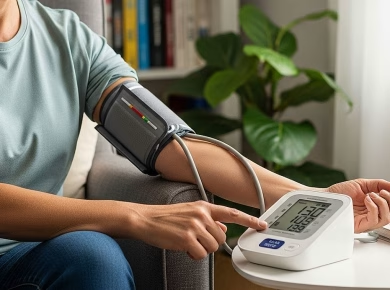When I first decided to invest in smart home technology, I was excited about the convenience and control it promised. However, as I navigated the myriad of devices and options available, I quickly realized that enhancing my home’s security was paramount. The convenience of a smart home can sometimes overshadow the vulnerabilities that these technologies introduce, making it essential to prioritize robust security measures. After years of trial and error, I’ve gathered valuable insights that can help anyone looking to enhance their smart home security, whether you’re a tech novice or a seasoned enthusiast.
Understanding Smart Home Vulnerabilities
The integration of smart devices into our homes undoubtedly simplifies our lives, but it also opens doors for potential threats. Many homeowners assume that simply purchasing high-end security devices will keep them safe. However, it’s crucial to understand that these devices, while advanced, can be exploited if not properly secured.
Common Threats to Smart Homes
Cybercriminals are constantly evolving their tactics. They often target vulnerabilities in smart devices, utilizing methods such as phishing, weak passwords, and outdated software. For instance, a security camera may offer high-resolution video and remote access but could be vulnerable if it’s connected to a weak Wi-Fi network. It’s essential to recognize that any device connected to the internet can be a potential entry point for hackers.
Strengthening Your Wi-Fi Network
The first line of defense in any smart home security strategy is a secure Wi-Fi network. Many underestimate the importance of their Wi-Fi setup, thinking a simple password will suffice.
Change Default Credentials
One of the most straightforward yet impactful steps is changing default usernames and passwords. Most smart devices come with factory settings that are widely known, making them easy targets for hackers. By creating unique, strong passwords for each device and your Wi-Fi network, you significantly reduce the risk.
Network Segmentation
Consider segmenting your home network. By creating a separate network for smart devices, you can limit access and potential damage. For example, if a smart light bulb is compromised, it won’t provide a gateway to your primary devices like computers or smartphones. This simple adjustment can add an essential layer of security.
Utilizing Strong Authentication Methods
As devices become smarter, so too should our methods of authentication. Many smart home systems now offer two-factor authentication (2FA), which adds a critical layer of security.
Implement Two-Factor Authentication
Enabling 2FA on your smart home applications ensures that even if someone obtains your password, they cannot access your devices without the second form of verification. This can be an SMS code or an authentication app, which provides an additional barrier against unauthorized access.
Regular Updates and Patches
Keeping your devices updated is another vital practice. Manufacturers frequently release firmware updates that address security vulnerabilities. Neglecting these updates can leave your devices exposed to known threats. Make it a habit to check for updates regularly, or enable automatic updates whenever possible.
Smart Device Selection and Configuration
Not all smart devices are created equal. When selecting devices for your smart home, prioritize those with robust security features.
Research Before You Buy
Before purchasing a smart device, research its security features and how it has performed in the market. Look for devices that have been positively reviewed for their security protocols or have received updates addressing security flaws.
Default Settings and Features
Once you’ve selected your devices, take the time to configure them properly. Many devices come with settings that, if left unchanged, can expose you to risk. Disable unnecessary features, such as remote access, if you don’t plan to use them. This reduces the number of potential entry points for cybercriminals.
Surveillance and Monitoring
In addition to securing your network and devices, physical security measures play a critical role in safeguarding your home.
Smart Cameras and Alarms
Investing in quality smart cameras can help you keep an eye on your property. Look for cameras with features like night vision, motion detection, and cloud storage. Pairing them with a smart alarm system can provide comprehensive coverage. When both systems are integrated, you can receive alerts on your smartphone, allowing you to respond quickly to any suspicious activity.
Continuous Monitoring Services
Consider utilizing monitoring services that alert you to any unusual activity, whether it’s a door being opened or motion detected in your yard. These services often provide peace of mind, especially when you’re away from home.
Educating Household Members
Finally, one of the most effective yet often overlooked strategies for enhancing smart home security is education.
Creating a Security Culture
Engage all household members in discussions about smart home security. Teach them about the risks and how to recognize potential threats, such as phishing emails or suspicious links. Encouraging a culture of awareness can significantly reduce the likelihood of a successful attack.
Establishing Protocols
Establish clear protocols for when and how to use smart devices. For example, avoid connecting to public Wi-Fi networks when accessing smart devices, and always log out of applications when not in use. These simple practices can help maintain security across the board.
Conclusion
Enhancing smart home security is not just about installing the latest technology; it’s a comprehensive approach that includes understanding vulnerabilities, securing your network, selecting the right devices, and educating those around you. By implementing these strategies, you can enjoy the benefits of a smart home without compromising safety. Embracing these best practices not only protects your property but also fosters peace of mind, allowing you to fully appreciate the convenience and comfort that smart home technology offers. As the world of technology continues to evolve, staying informed and proactive about security will always be your strongest defense.







